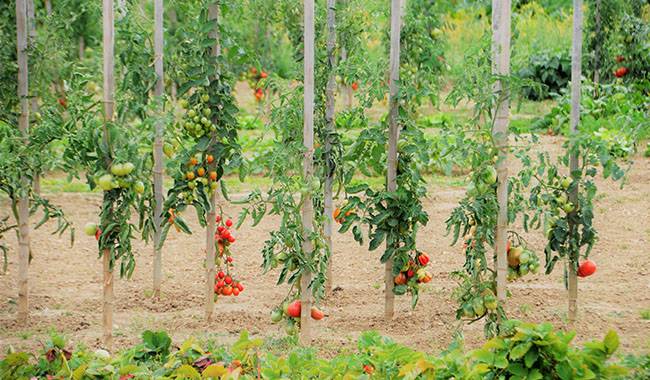
Tomatoes are one of the most popular vegetable crops and as such are quite common in vegetable gardens. What is a vegetable garden without tomato plants! Indeed, in this case, it looks a bit unsightly. It is quite common for gardeners to have some kind of competition for the biggest fruit, the tastiest fruit, etc.
Generally speaking, if you can grow tomatoes year after year, getting high yields, and skillfully avoiding the pitfalls of phylloxera and other pests and diseases, then you are a true gardener. Do you remove the lower leaves of tomatoes?
We can not say that tomatoes are a culture of growing with complex agricultural engineering and high demands, but really quite simple tomato bushes are not called.
Take the example of removing “extra” leaves: it all seems trivial – just rip or cut them off – but in fact, it turns out, the rules must be followed and it almost has to be learned.
The controversy surrounding the need to remove leaf plates from tomatoes and the validity of this “event” has only now subsided. Let’s figure out what to do, how to do it, and when to do it so as not to harm the plant and to help by tearing off the leaves.
SHOULD THE LOWER LEAVES OF TOMATO PLANTS BE REMOVED?
Let’s start by finding out how necessary this procedure is in general, and is it so necessary for the plant and for you and me? The opinion here, as is usually the case, is of two kinds – necessary or not necessary at all.
But that tomato is best left untouched, and often beginners say, they say, why to mess with nature, the plant itself will decide how many and what leaves it should have.
So that beginners often do it because they are afraid of causing any harm and of course because of lack of knowledge. Professionals in their business are unanimous in asserting the need to cut or trim the leaves of tomatoes, which will prove useful for the plant and for you and me.
In favor of tomatoes, some leaves are still unnecessary and should be removed, saying that usually the more leaves and buds of the plant, the more actively these same plants evaporate soil moisture and absorb nutrients in order to feed the flora accurately and only afterward pay attention to the fruit.
Thus, very strong tomato plants with many green blocks tend to produce very little for their owners and the fruit is not always tasty.
But that’s not all, for example, the lower leaves of tomatoes, because they are sometimes quite large, quite obviously interfere with the normal movement and air circulation at the bottom of the plant, so they trivially hinder evaporation from the soil and adjacent leaf plates, which creates a breeding ground for fungal infections, including phylloxera.
In addition, such tomato leaves, if not cut, tend to bend down during irrigation or under the influence of raindrops and even come in contact with the ground, causing them to rot and form infected lesions and develop associated diseases. It has been observed that it is from the lower leaves that the phylloxera of tomatoes begins and gradually rises above the plant.
WHICH TOMATO LEAVES SHOULD BE REMOVED?
If the underside of the leaves has turned yellow and spots have appeared on them, it is necessary to simply remove them immediately. This is the ideal environment for the development of most tomato diseases. And yellowing of the lower leaves of tomatoes is often a sign of improper care, so if they are yellowing, you’re doing it wrong. And yellowed leaves are already dead, so to speak, and you must remove them straight away.
In addition to removing the lower leaves of healthy tomatoes, you should also remove leaves that are starting to dry out: it doesn’t matter if they are on the bottom or if they are right above and below. Tomato leaves sometimes wilt simply because of age: if the plant no longer needs them, you must help it to remove them, otherwise, the infection will affect them as well.
Also, you can thin the middle part of the tomato bush like you would a shrub, but it is advisable to remove the leaves on the north-facing side of the bush. This provides better ventilation and reduces the risk of fungal and other infections. Fat shoots that are growing from the bottom can also be removed, as they are not very useful and wastewater and nutrients.
BENEFITS OF REMOVING THE LOWER LEAVES OF TOMATOES
So, hopefully, it becomes a little clearer what we are suggesting for the purpose of removing the lower leaves of tomatoes, but we don’t tell what the benefits of this removal are, which they undoubtedly are.
The first advantage
With the lower leaves removed, the plant becomes more open, air masses circulate freely at the base of the bush, water evaporates normally from the soil surface and leaf plates, and the risk of tomato phylloxera and other infections is greatly reduced (but not completely gone!).
The second advantage
We remove at-risk tomato leaves because, as we mentioned above, they are usually the first to get sick, which is also a benefit to minimize the risk of phylloxera on your property.
In addition, we remove unnecessary parts of the tomato bushes, therefore, reducing to some extent the evaporation of water from the plants themselves (i.e., consumption from the soil, which is especially important for large mound plots) and reducing the consumption of substances that maintain the presence of these leaves, which results in these same substances that will be used to form the fruit.
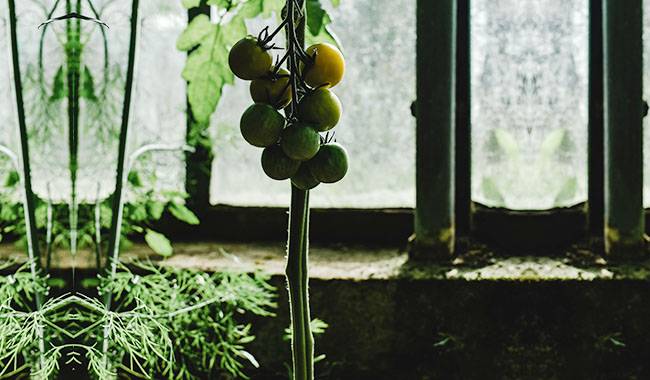
WHEN TO REMOVE TOMATO LEAVES AND HOW TO DO IT CORRECTLY?
So, we have firmly understood the need to remove the lower leaves from the tomato bush, now let’s figure out when it is possible to do so and, importantly – how to do it correctly.
Keep in mind that under no circumstances should you rush to remove tomato leaves: therefore, if you remove them immediately after sowing seedlings, you can only make things worse and the plant is likely to stop growing or slow down strongly.
Only when the seedlings have grown and become stronger should you remove the leaves underneath; this takes seven to ten days. You can tell that tomato seedlings have taken root by the fact that their growth process has been activated.
Before proceeding to remove the leaves from tomatoes, check all plants, first removing the lower leaves, which for some reason are starting to dry out and turn yellow, where the risk of infection is higher, and then going back to remove the lower leaves from healthy plants.
If you are still in doubt about the advisability of removing the lower leaves of the tomatoes, we recommend performing this procedure first on the leaves located on the north side of the bush. This is because these leaves, in addition to being at the bottom, are in the shade and therefore not really involved in photosynthesis and therefore not needed. Removing them will not harm the plant.
When removing tomato leaves, do not rush, but slowly remove the bottom two leaves and keep an eye on the plant. Sometimes the removal of small leaves provokes tomatoes to produce new inflorescences so that if the plant has flowered before they appear, it is better to remove them, as this is an additional and undue burden on the tomato bush. Leave new ovaries only if flowering before leaf removal is very dull and produces fewer inflorescences than usual or than is typical for this particular tomato variety.
Try removing the lower tomato leaves by pressing on the bottom of the petiole and pulling upward, i.e., along the stem rather than across, as if pulling it out of its socket. Try to support the trunk as well, and don’t pull too hard on the leaves, as there is a risk of the stem breaking or being crushed. You also should not pull the leaf down; if you do, you will tear the skin of the stem and the skin will pull the torn leaf down and you will get a wound and any infection will enter easily and very quickly.
It is best not to remove the lower leaves of tomatoes on cloudy and cool days, many people do this for some reason, instead, do it on a nice sunny day, but always in the morning (around 7-8 am when the sun is already shining) when the plant is at maximum dampness. In fact, on a sunny day, the wounds left in the front leaf position will tighten faster than on a cloudy day, and there is little risk of infection entering the wounds.
Don’t be too zealous when removing the lower leaves of your tomatoes; the main rule here is do no harm. Remove small leaves no more than twice a week at a time, remove or cut off two or three leaves and no more. Only this type of removal will not cause too much damage to the plants and they will go through the process without any problems.
The rules for removing lower leaves are as follows: if the brush has not yet borne fruit, it is best not to remove more than one lower leaf from the shoot where the brush is located, but if the fruit has been borne, all leaves can be completely removed below the brush, leaving only the top bunch of leaves. Just below the brush, however, are the lower leaves of the tomatoes, not the upper ones.
The first wave of leaf removal can be done safely after all ovaries have formed, and the second wave can be done when the tomatoes are finally formed and starting to color. By doing this we will direct the maximum amount of nutrients to the fruit, but at the same time it is important to water moderately as the leaf discs are removed, otherwise, too much water will cause the fruit to crack. If it rains, you will need to stop watering altogether and loosen the soil at the base of the plant more often to increase evaporation and prevent water stagnation.
CONCLUSION
So, as we have learned: removing the lower leaves of tomatoes is not only possible, but necessary so you can solve many problems providing the fruit with access to nutrients and moisture, improving its taste and weight, increasing yields, and even minimizing the risk of fungal infections. The main thing is to get the job done correctly and in a timely manner.
More related information about growing tomatoes plants




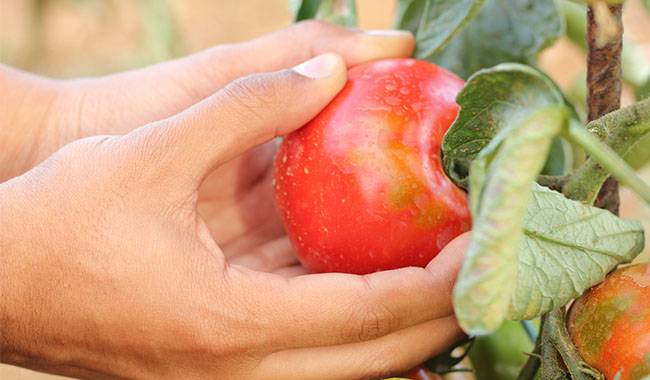
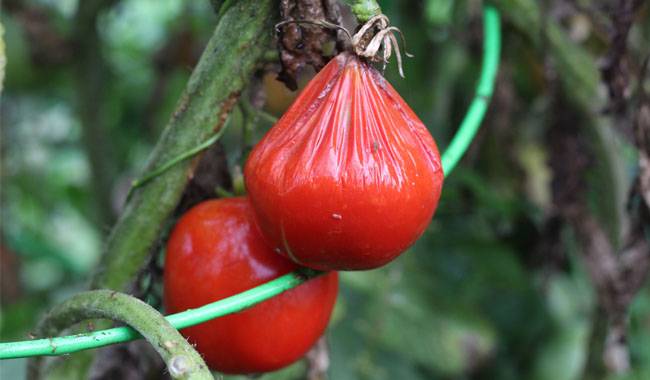
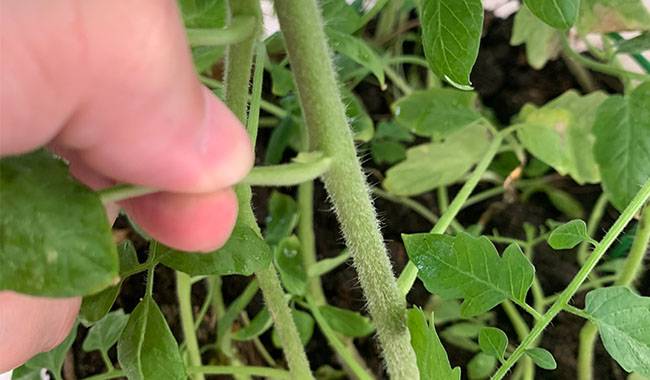
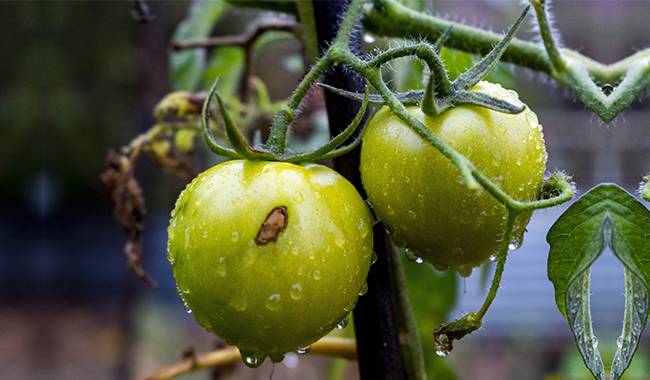
This is written so poorly it makes me suspicious it isn’t real. Perhaps it’s an automated translation?